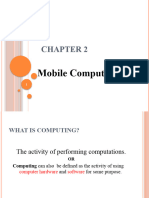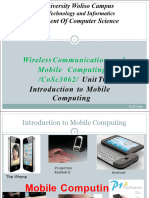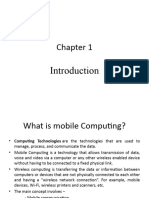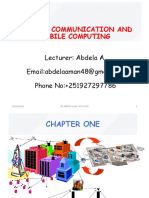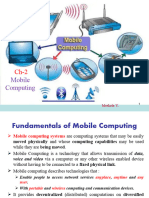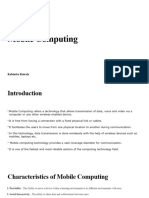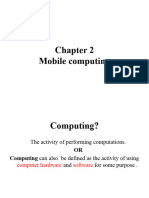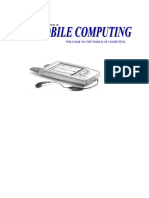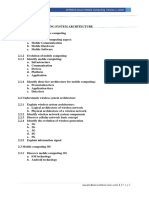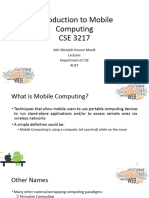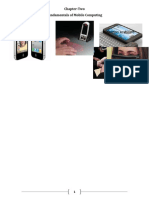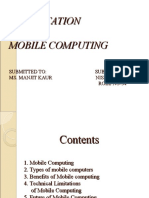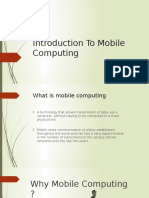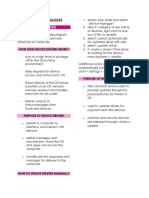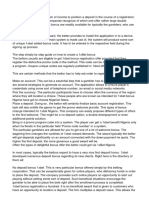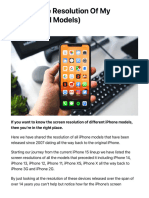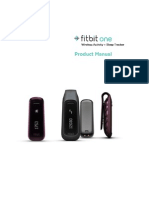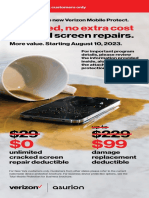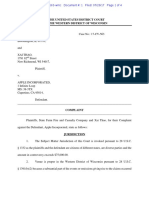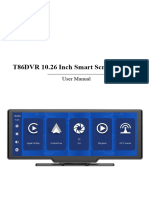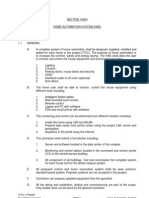0% found this document useful (0 votes)
15 views108 pagesChapter 1 - Mobile Computing From AAU
The document provides an overview of mobile computing, including definitions, trends, and challenges associated with mobile devices and applications. It discusses various computing paradigms such as personal, distributed, and pervasive computing, along with the evolution of mobile devices like smartphones and tablets. Additionally, it covers mobile operating systems, their functions, and the characteristics of cloud computing, emphasizing the importance of mobile technology in various sectors like business and emergency services.
Uploaded by
rehiwottCopyright
© © All Rights Reserved
We take content rights seriously. If you suspect this is your content, claim it here.
Available Formats
Download as PDF, TXT or read online on Scribd
0% found this document useful (0 votes)
15 views108 pagesChapter 1 - Mobile Computing From AAU
The document provides an overview of mobile computing, including definitions, trends, and challenges associated with mobile devices and applications. It discusses various computing paradigms such as personal, distributed, and pervasive computing, along with the evolution of mobile devices like smartphones and tablets. Additionally, it covers mobile operating systems, their functions, and the characteristics of cloud computing, emphasizing the importance of mobile technology in various sectors like business and emergency services.
Uploaded by
rehiwottCopyright
© © All Rights Reserved
We take content rights seriously. If you suspect this is your content, claim it here.
Available Formats
Download as PDF, TXT or read online on Scribd
/ 108





